In the courtyard of Beit al-Suhaymi.
If you’ve read many of my posts, you may have noticed that what interests me most everywhere are places where people have lived. Often the most interesting are those that haven’t been lived in continuously or kept in pristine condition. It’s been said that poverty is the best preserver as when there’s no money to update and “improve” a home, the original sometimes survives. You’ll find more details of the history of these fascinating buildings by going to the links provided for each at the bottom of the page.
In Cairo in recent times there’s been less money for upkeep of monuments of all kinds and while Ahmed, my guide, was distressed seeing the condition of the houses, I confess I wasn’t bothered by the lack of housekeeping, dust and faded fabrics only adding to the atmosphere. One in particular, Beit Zainab Al-Khatoun, a bit off the beaten path, felt to me like we were entering a secret place not seen by many in a very long time. We were the only visitors and while I realize lack of maintenance over time could imperil the structure, I was grateful it had been kept open at all.
Beit al-Suhaymi (1648)
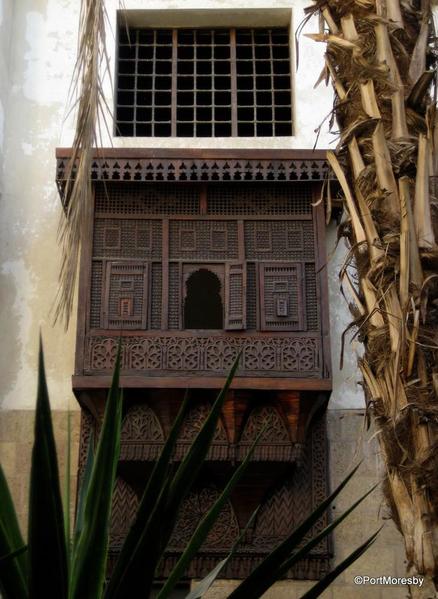
Of the 3 houses I saw, Beit al-Suhaymi was the one with the most interesting outdoor spaces. The interior courtyard was a garden with mature plantings and one went directly there on entering before accessing the rest of the building. And there was another open outdoor space at the rear of the house, shown at the top of the plan below, so one could see the detail of the walls and windows, unusual I think. This was also the house with the most visitors, which is to say the only one with any others at all.
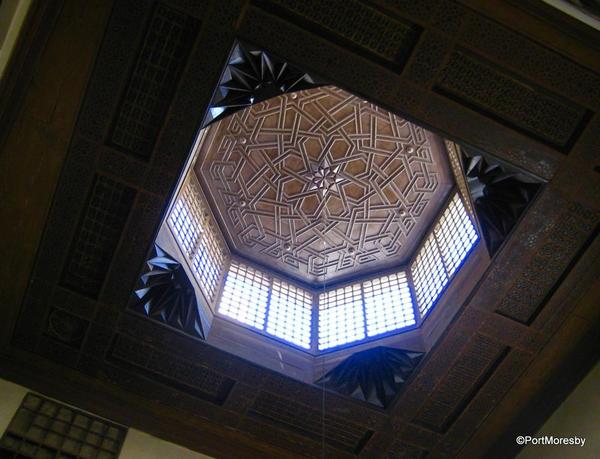
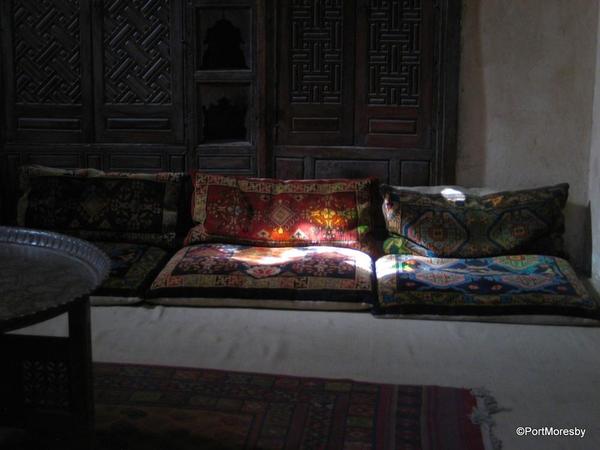
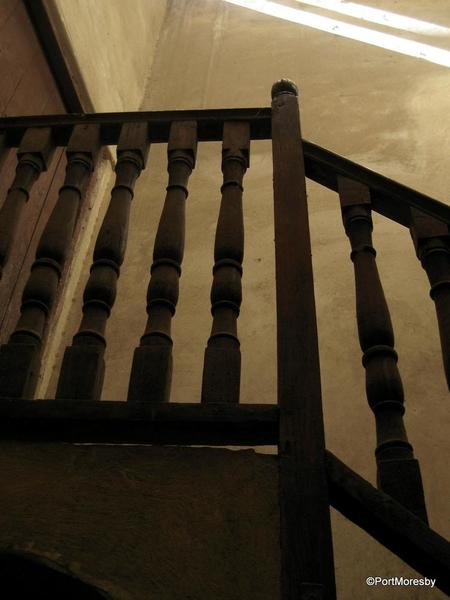

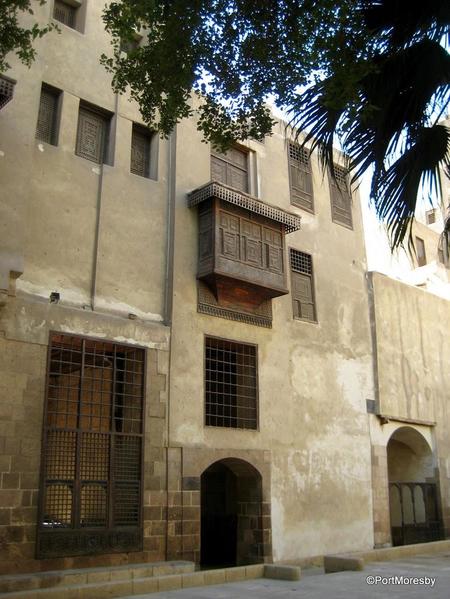 Rear exterior, above & 2 below.
Rear exterior, above & 2 below.
Beit Zeinab al-Khatoun (1486)
Though Ahmed feared for the future of this neglected but most atmospheric house, having it to ourselves was the high point for me at the end of the day spent in the medieval city. Smallest of the three I visited and tucked away behind Al Azhar Mosque, the dust and silence left me with the feeling I seek in such places, that I’ve stepped back in time and passed through a place inhabited by centuries of ghosts lingering in their home.
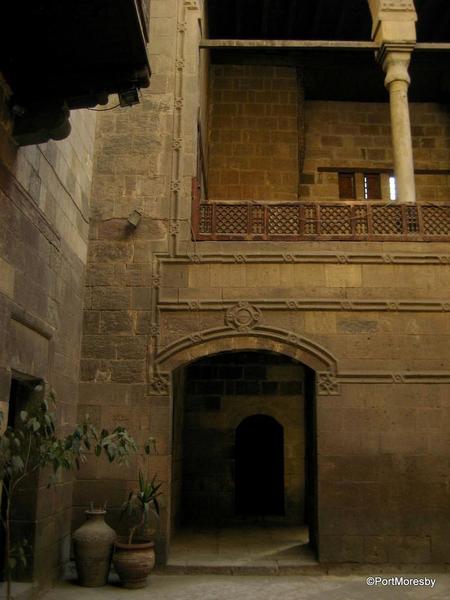
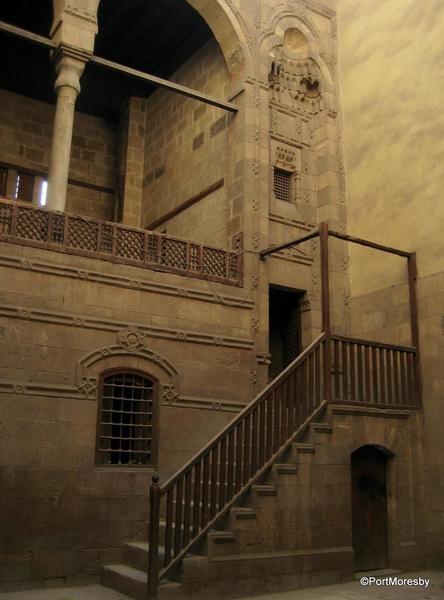
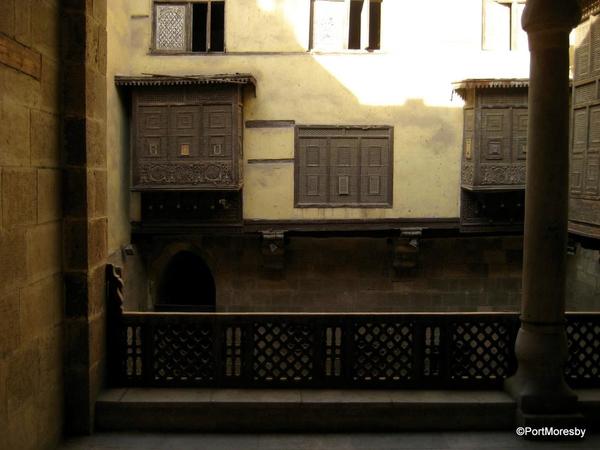
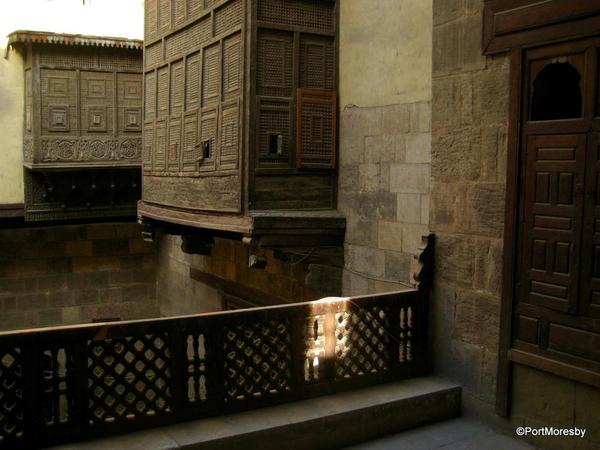
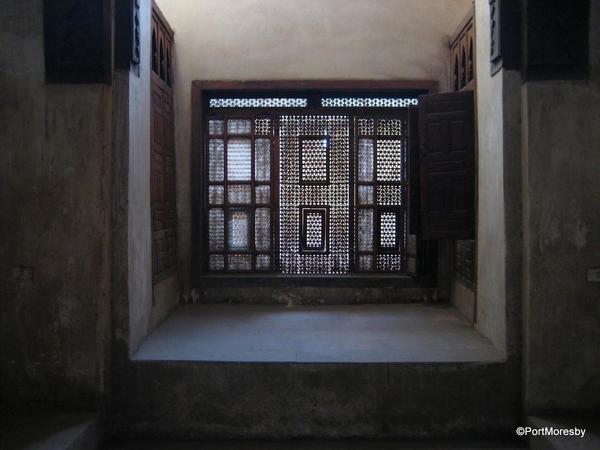

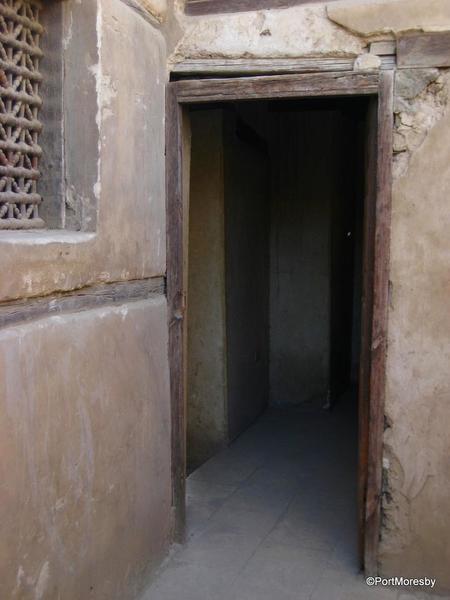
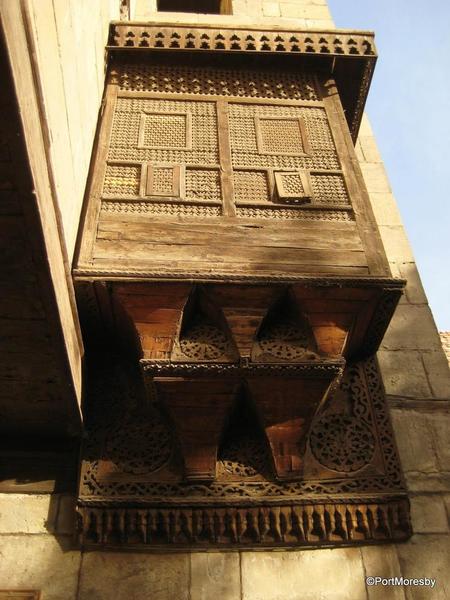
Floor plan of Beit Zeinab al-Khatoun.
The Gayer-Anderson Museum, Beit al-Kritliyya (1631)
I’d decided to visit the Egyptian Museum on my own, the better to drift through as I looked for pictures to share, and when I’d had enough I hoped to still have time to visit the Gayer-Anderson house museum some distance away. I had yet to experience a taxi on my own but figured this would be the time. On exiting the museum I was approached by a taxi driver and though I’m usually leery of this sort of solicitation, I figured it was as good a way as any with my time constraints. I’d discovered that in Egypt the usual way of discussing fares is to not discuss them but to offer payment at the destination, which if sufficient, is the end of the transaction without comment. In this case, the driver asked where I wanted to go and offered a package deal, to the house and then to my hotel at a fixed price. As we walked toward his car, parked in an underground garage nearby, we debated the figure but came to no agreement on what it would be. The good-humored discussion continued on the way, both of us knowing that it would work out in the end.
I was the only visitor in the house and it was the only one in which I was taken on a tour. I understood as we made our way around that it was necessary to keep visitors from becoming hopelessly lost and because of the many personal possessions left as a gift to the Egyptian people by it’s last resident, Major R.G. Gayer-Anderson Pasha.
The young man assigned to conduct me through the huge house, the one I’d most call a palace, was quietly firm with me to keep to the designated route but also left me patiently to find my photos. I enjoyed his quiet company and his naming of the rooms as we went. Though called an “art museum” it’s much more, an intact home with furnishings and other belongings, such as vintage photographs on the walls in which we see the resident and his visitors. So despite the many decades that have passed since Major Gayer-Anderson left for the last time, the memory of his love for his home in Egypt is preserved.
On the roof.
Two sides of the house are supported by walls of the
Ibn Tulun Mosque, seen through the screen on the roof above.
Beit el-Suhaymi (House of Suhaymi)
19 Sharia al-Darb al-Asfar
Beit Zeinab al-Khatoun (House of Zeinab al-Khatoun)
3 Sharia Mohammed Abduh
The Gayer-Anderson Museum, Beit al-Kritliyya (House of the Cretan Woman)
4 Maydan Ibn Tulun, the Citadel, adjacent to the Ibn Tulun Mosque
Ahmed Gamal, Egypt Tour Guide Extraordinaire,
can be reached by email, agrdaly@yahoo.com.
All episodes of 'PortMoresby in Egypt' can be found here.
And others of PortMoresby’s contributions here.

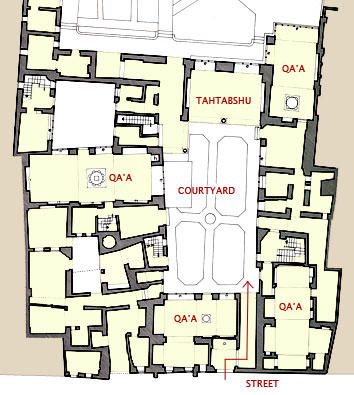
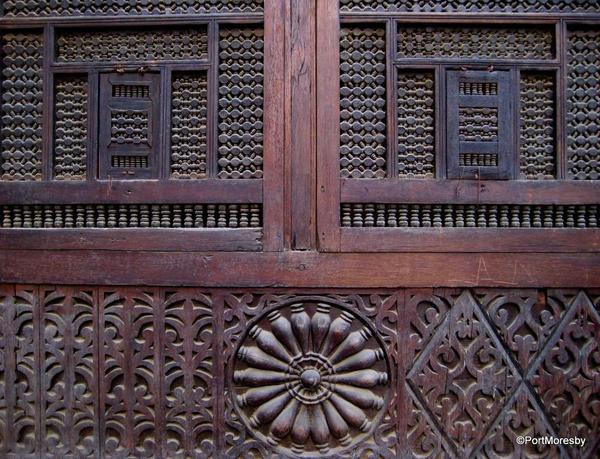

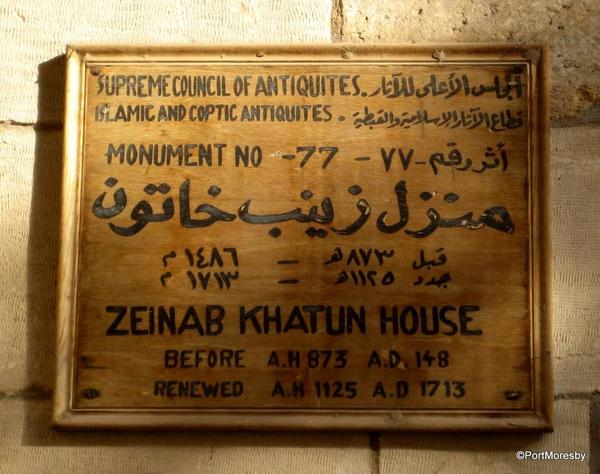
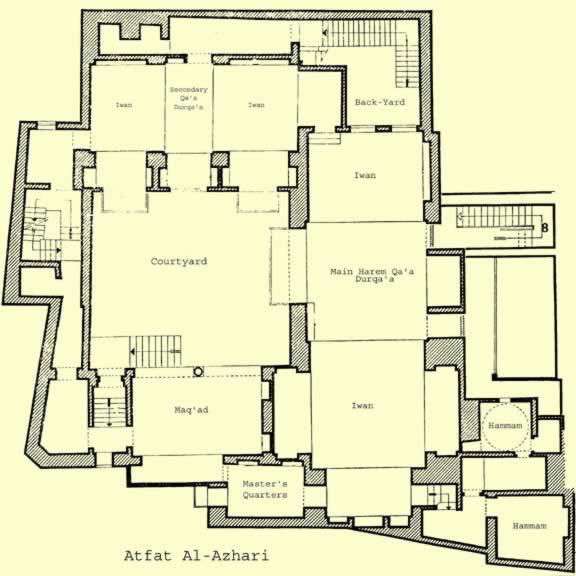

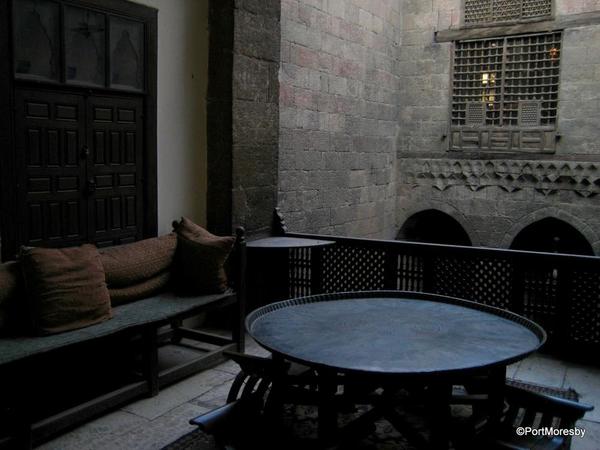
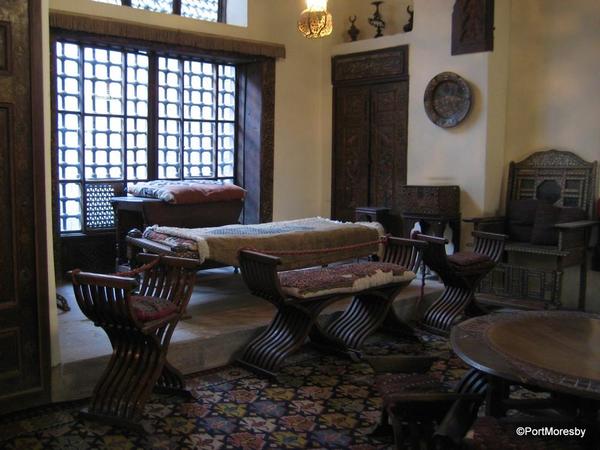
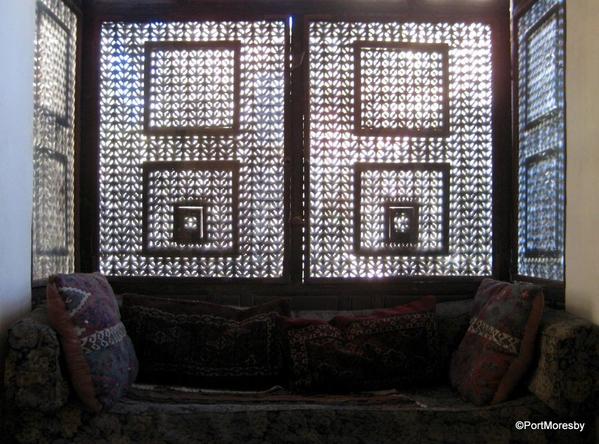
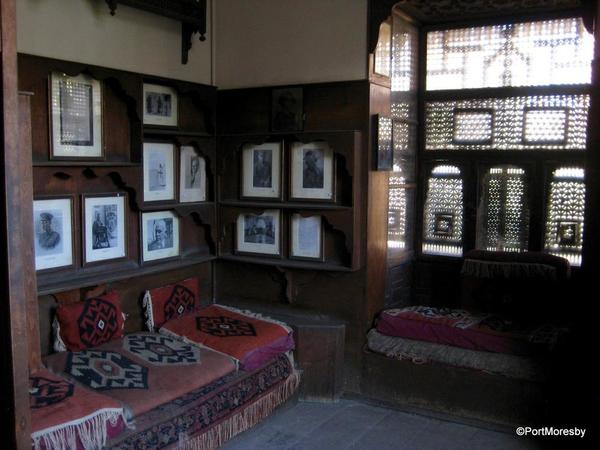
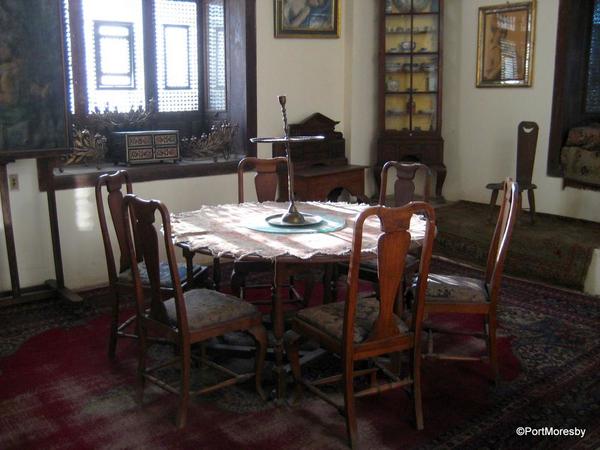
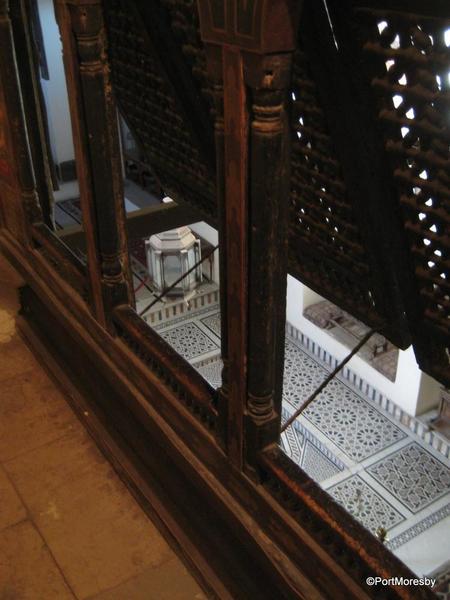
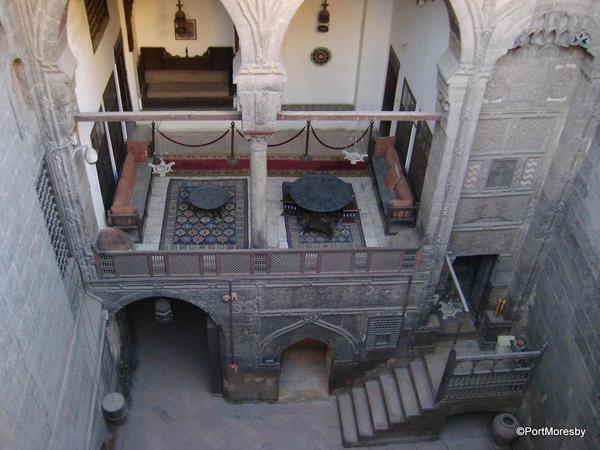
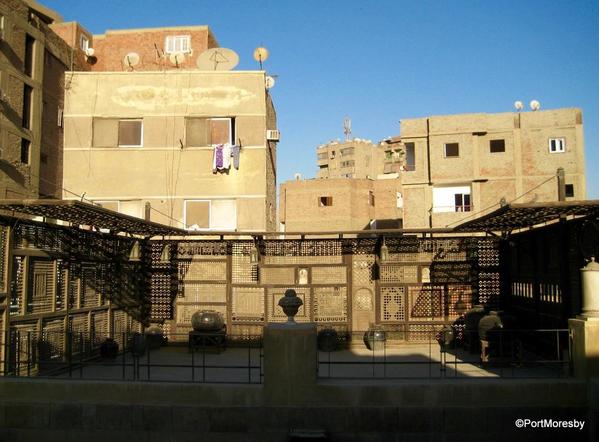
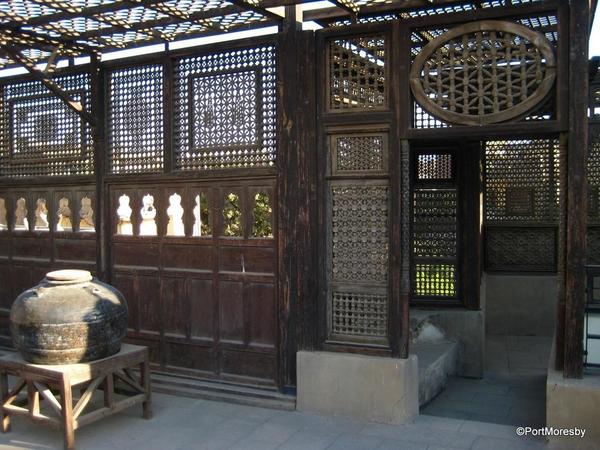
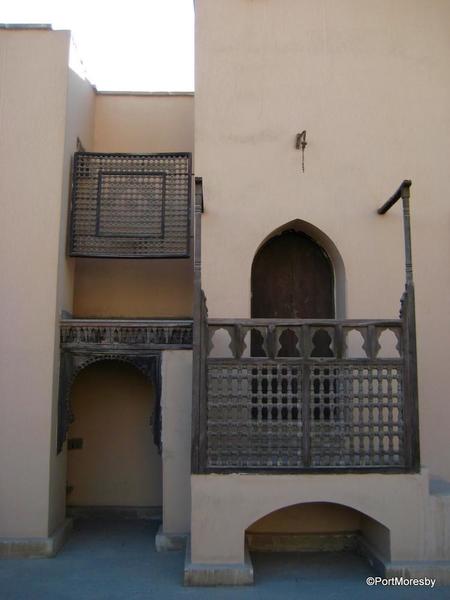
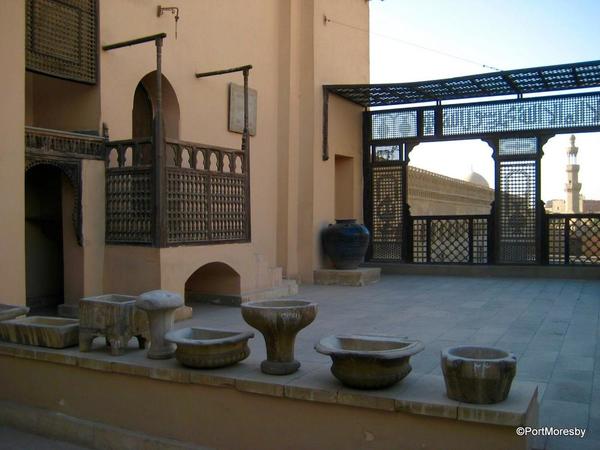
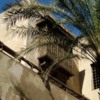




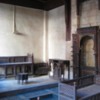


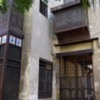






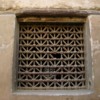


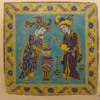













Comments (1)